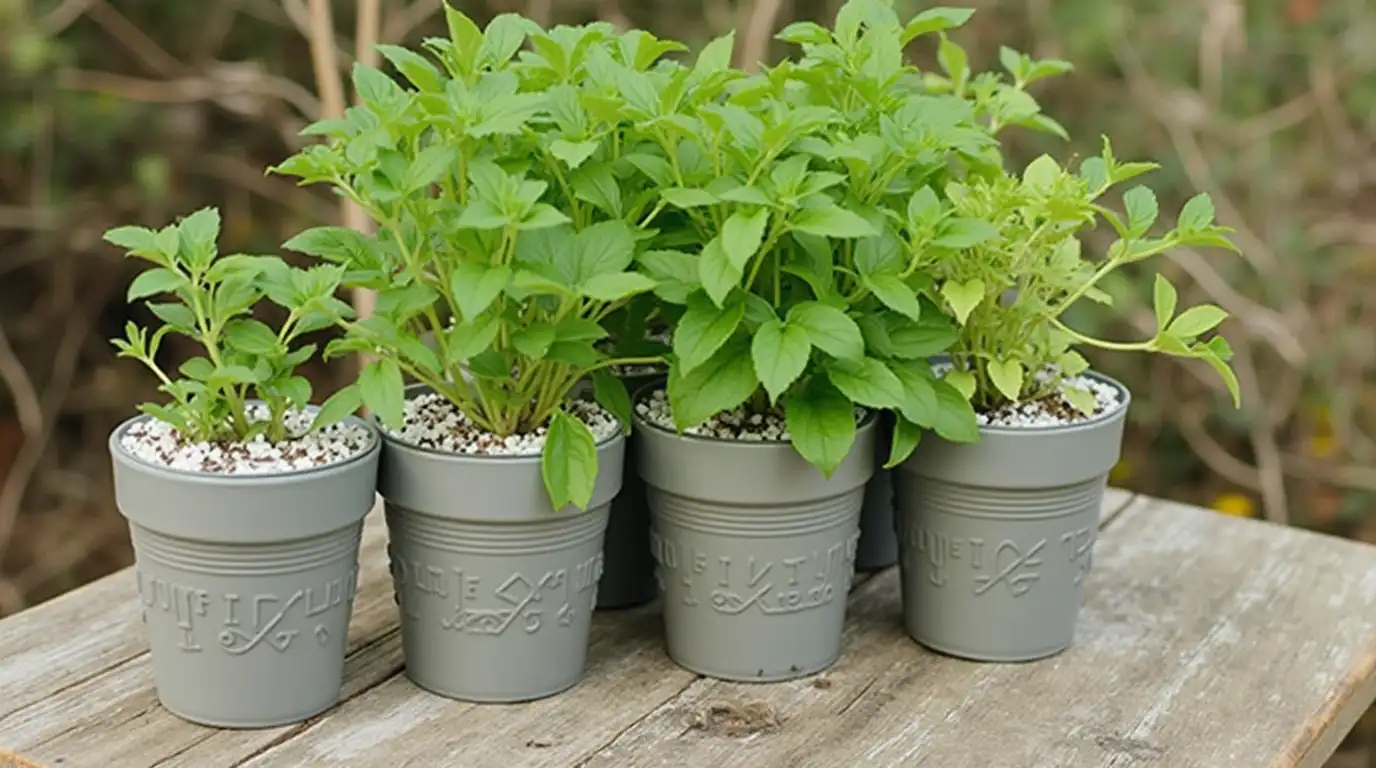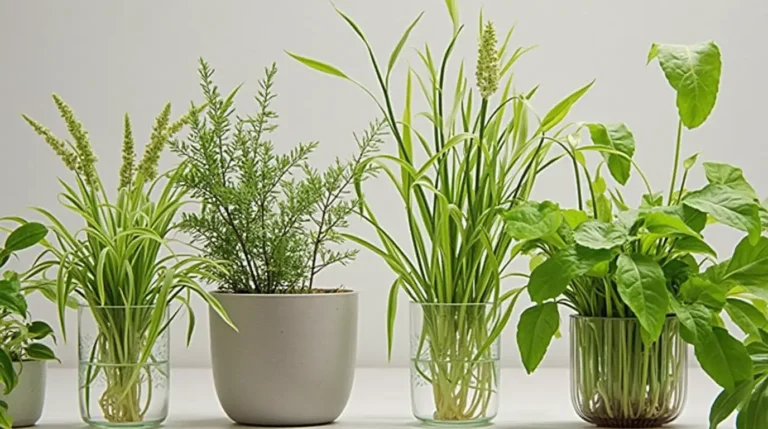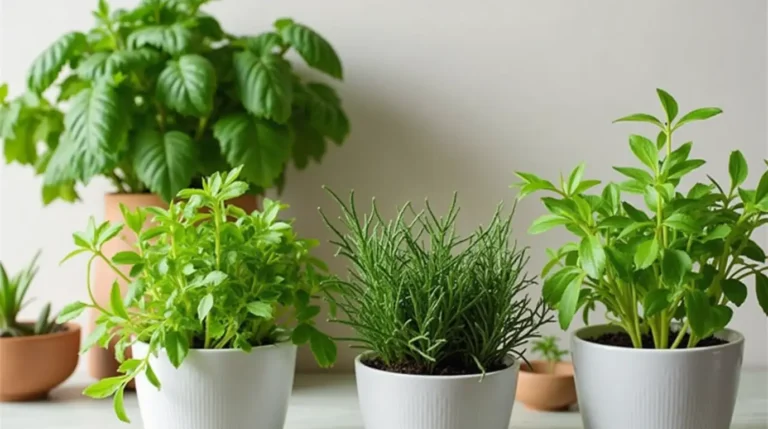Top Cheap Containers for Growing Herbs Indoors and Outdoors
Introduction
Table of Contents
ToggleChoosing the right cheap containers for growing herbs is more than just an aesthetic decision. It profoundly influences the health and growth of your plants. Whether you’re cultivating an herb garden on a sunny balcony, a kitchen windowsill, or in a backyard garden, the container you choose plays a vital role in your plants’ success. From determining moisture levels to ensuring proper root development, every detail counts. This article will guide you through the cheap containers for growing herbs both indoors and outdoors, exploring a variety of options that suit every gardener’s needs, style, and space limitations.
Understanding Herb Growing Needs
Different herbs have unique growing conditions that influence how they should be grown. While some herbs thrive in deep, well-drained soil, others prefer shallow containers with good airflow. Understanding these needs is essential for selecting the right cheap containers for growing herbs. Herb gardening is not just about planting in any available pot; it’s about matching the herb’s natural habitat with the right growing conditions.
Container size, material, and drainage are all pivotal factors in determining how well your herbs will thrive. The wrong container could lead to poor root development, waterlogging, or even plant death. Before choosing a container, it’s crucial to understand the specific needs of each herb species, including space for roots, exposure to sunlight, and moisture levels. With the right cheap containers for growing herbs, you’ll be setting up your herbs for success.
Clay Pots: Classic Elegance for Herbs
Clay pots have been a popular choice for centuries, and for good reason. Their natural, earthy appearance complements any herb garden, indoors or outdoors. But beyond looks, these cheap containers for growing herbs offer a range of benefits that help promote healthy plant growth. Clay pots are breathable, allowing air to circulate through the walls of the pot and keeping the roots of your herbs cool. They also promote healthy moisture control, ensuring that your plants do not become waterlogged, a common problem in overly humid environments.
When choosing clay pots, consider herbs that don’t mind a bit of dryness between waterings, as clay pots tend to dry out faster than other materials. Herbs like rosemary, thyme, and lavender thrive in these conditions. Clay pots are perfect for your sun-loving herbs that need room to spread their roots.
Plastic Containers: Lightweight and Durable
Plastic containers are a favorite for many gardeners due to their lightweight nature and durability. These cheap containers for growing herbs are especially great for beginners or those who need to move their plants frequently. Plastic retains moisture better than some other materials, which can help maintain consistent moisture levels for your herbs. Additionally, plastic containers are generally more affordable and come in a wide variety of sizes and colors, making them perfect for any space.
For herbs that need consistent watering, such as basil or parsley, plastic pots work wonders. Their ability to hold moisture makes them ideal for plants that thrive in moist conditions. These containers also retain heat, which is beneficial for growing herbs in colder climates. Just be mindful to ensure proper drainage, as excess moisture can lead to root rot.
Wooden Planters: Eco-Friendly and Aesthetic
Wooden planters bring a rustic charm to your herb garden, adding a natural, earthy touch to your balcony or garden. They’re particularly suited for those looking to create a more eco-friendly garden space, as wood is biodegradable and sustainable. Wooden planters naturally regulate moisture, keeping the soil from drying out too quickly. However, they do require proper care to avoid rotting, especially if left outdoors in damp conditions.
Wooden planters are great for larger herb gardens. They provide ample space for root systems to grow and spread out. They work well for herbs like sage, rosemary, and oregano, which have slightly larger root systems. For added durability, ensure your wooden containers are treated or lined to protect against the elements.
Hanging Baskets: Elevating Your Herb Garden Design
Hanging baskets are an excellent option for maximizing vertical space in a small garden or balcony. They add visual interest by creating layers of greenery while freeing up valuable floor space. Ideal for plants that do well with less root depth, hanging baskets can support herbs like trailing mint, parsley, or thyme.
When choosing a hanging basket, ensure that it has proper drainage holes to avoid waterlogging. To optimize sunlight exposure, place the baskets in a spot that receives full sunlight for most of the day. With a little creativity, hanging baskets can turn your herb garden into a beautiful, cascading display of color and texture.
Self-Watering Containers: Low-Maintenance Convenience
For those with a busy lifestyle, self-watering containers are a game changer. These cheap containers for growing herbs are designed to maintain consistent moisture levels, which is perfect for herbs that are sensitive to fluctuations in watering. The self-watering system allows the plant roots to access water as needed, without the risk of over or underwatering.
Self-watering containers are particularly useful for herbs like basil, mint, and chives, which thrive when kept consistently moist. These containers reduce the frequency of watering and are perfect for beginners or anyone looking for a low-maintenance solution. However, make sure to regularly check the water reservoir and clean it to prevent algae buildup.
Raised Beds: Ideal for Larger Herb Gardens
If you have ample outdoor space, raised beds are an ideal option for growing a variety of herbs. Raised beds are essentially containers that allow you to grow a garden above ground level. They provide excellent drainage and allow you to control the soil quality, ensuring that your herbs have the best possible growing conditions.
These cheap containers for growing herbs are great for deep-rooted herbs such as rosemary, thyme, and sage, as they provide plenty of space for root expansion. Raised beds also warm up quickly in the spring, making them perfect for extending your growing season. To maintain them, simply add compost and organic matter to keep the soil nutrient-rich and healthy.
Window Boxes: Maximizing Vertical Space
Window boxes are a perfect solution for growing herbs in small or urban spaces. They allow you to take advantage of vertical space, transforming your windowsill into a vibrant herb garden. Not only do they provide ample sunlight, but they also keep herbs close at hand for easy harvesting while cooking.
To make the most of your window boxes, arrange herbs based on their sunlight needs. Some herbs, like basil and cilantro, need more sunlight than others, so position them accordingly. Window boxes are ideal for shallow-rooted herbs, such as chives, parsley, or thyme. Be sure to check that the boxes have good drainage to avoid root rot.
Terracotta Planters: A Stylish and Practical Choice
Terracotta planters are known for their traditional charm and practicality. These cheap containers for growing herbs provide excellent drainage and are perfect for growing herbs that prefer a drier soil environment. The porous nature of terracotta allows air to circulate through the soil, promoting healthy root development.
For herbs like oregano, basil, and rosemary, terracotta pots are an excellent choice. They keep the roots cool and dry, which helps prevent rot and mildew. Terracotta containers can be heavy, especially when filled with soil, so they’re better suited for stationary garden spots. To protect them from cracking in cold weather, consider moving them indoors during winter.
Ceramic Pots: Aesthetic Appeal Meets Function
Ceramic pots offer both style and functionality, making them an attractive option for herb gardening. These cheap containers for growing herbs come in various colors and patterns, adding an artistic touch to your garden. Ceramic pots are heavier than plastic but are also very effective in retaining moisture, making them ideal for herbs that need consistent water levels.
Herbs like basil, thyme, and cilantro thrive in ceramic pots, as these containers regulate temperature and moisture levels effectively. While ceramic pots are more expensive than some other options, their aesthetic appeal and durability make them worth the investment.
Repurposed Containers: Budget-Friendly and Creative Ideas
Repurposing everyday items into herb containers is an affordable and creative way to start your herb garden. Old mason jars, tin cans, or wooden crates can easily be turned into charming herb planters. Not only is this a sustainable option, but it also allows you to personalize your containers and give them a unique flair.
When using repurposed containers, ensure they have proper drainage. Drill holes in the bottom or sides if necessary, and line them with gravel to prevent water from stagnating. Repurposed containers are ideal for smaller herbs like chives, mint, and cilantro, which don’t require deep soil.
Choosing the Right Containers Based on Location
Your herb garden’s location plays a crucial role in selecting the cheap containers for growing herbs. Indoor and outdoor conditions vary greatly, and you need containers that can withstand the elements or provide the best environment for your herbs. For outdoor gardens, select containers made of durable materials like plastic, wood, or stone that can resist the sun, wind, and rain. For indoor gardens, ceramic or clay pots are perfect for adding style and warmth to your living space.
Be mindful of the weather conditions in your area. If you live in an area with strong winds, choose containers that are heavy enough to stay in place. For very hot or cold climates, materials like terracotta or ceramic that retain moisture and temperature will be most beneficial.
Conclusion
Selecting the right cheap containers for growing herbs is crucial for ensuring healthy, thriving plants. From the rustic charm of wooden planters to the convenience of self-watering containers, each option offers its unique set of benefits. Whether you are growing herbs indoors or outdoors, consider the specific needs of your herbs, the space available, and your gardening goals. With the right cheap containers for growing herbs, your herb garden will flourish, providing fresh, flavorful herbs right at your fingertips.
For more tips on Containers for Growing Herbs, visit this link




